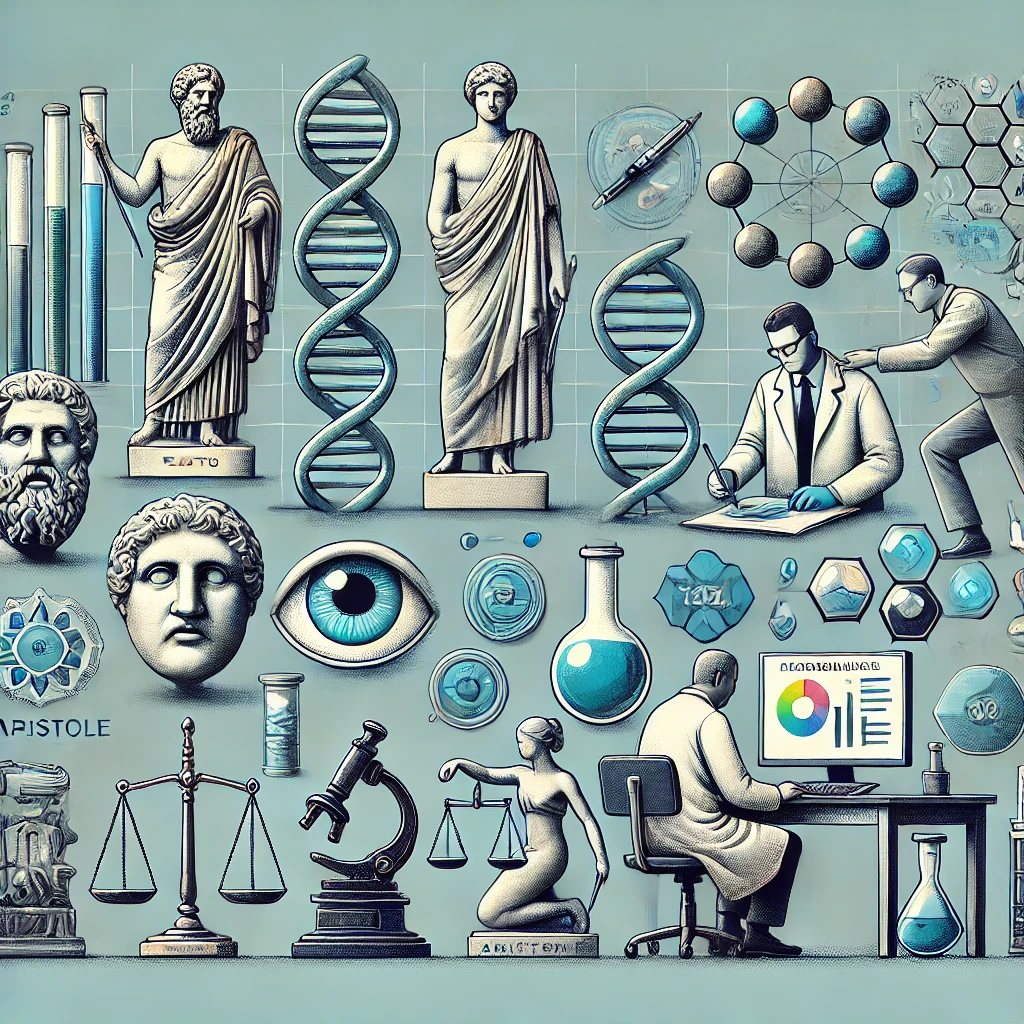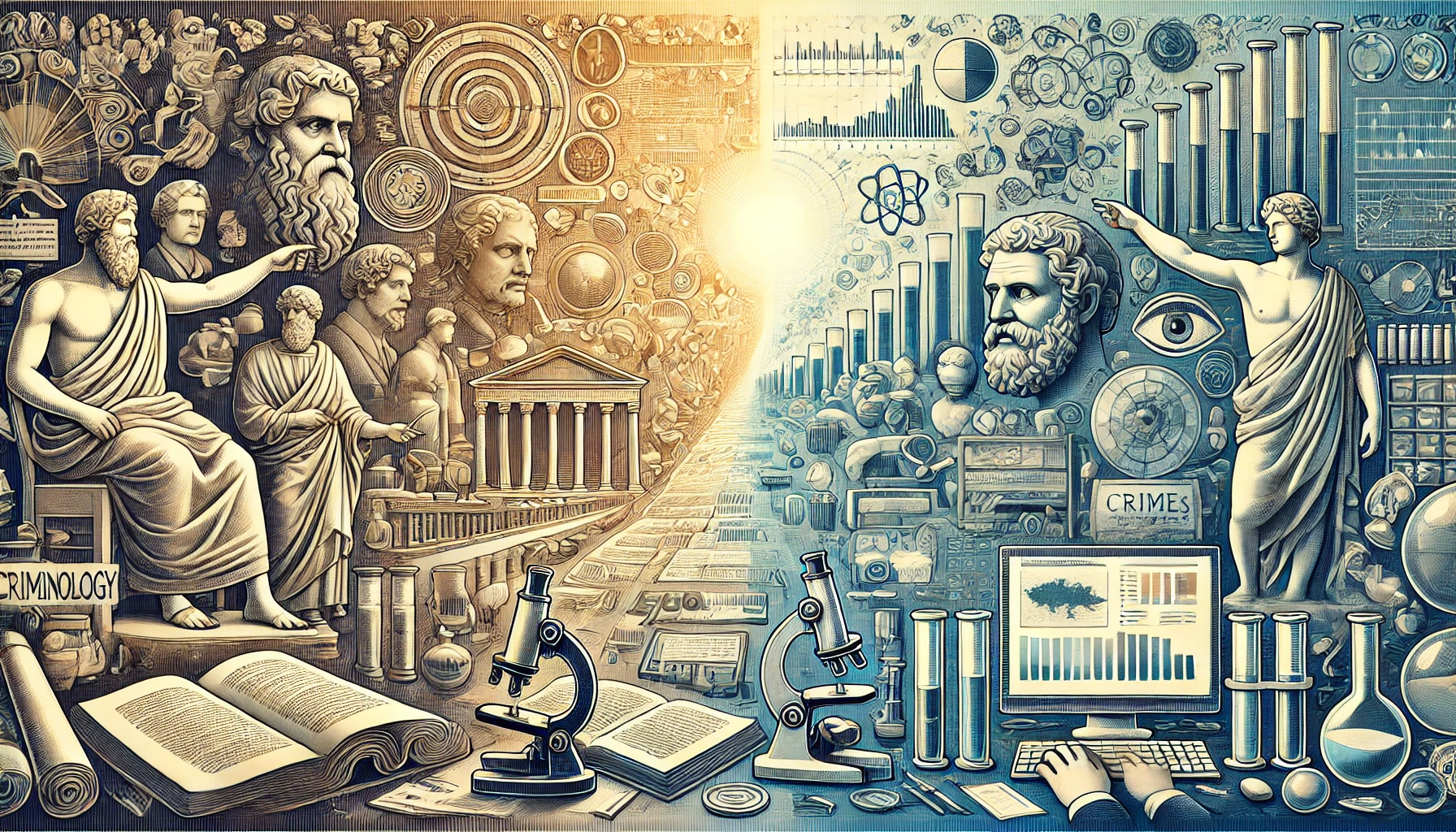Criminology, as a scientific field, has undergone significant transformations throughout history. From its philosophical roots to its establishment as a multidisciplinary science, criminology has evolved to address the complexities of crime and its societal impact. This evolution has been influenced by intellectual movements, groundbreaking theories, and practical applications in law enforcement and criminal justice systems.
In this article, we explore the historical development of criminology, from its conceptual beginnings to its modern-day applications. We delve into the major milestones, influential theories, and practical implications that have shaped this field, making it a cornerstone in understanding and addressing crime.
1. The Beginnings of Criminology
A) The Philosophical Roots
Criminology traces its origins to ancient philosophical inquiries about human behavior, morality, and justice. Philosophers such as Plato and Aristotle discussed the nature of crime, its causes, and the ethical principles governing punishment. These discussions laid the groundwork for later theories that linked individual behavior to societal norms.
B) The Enlightenment Era
The Enlightenment period in the 18th century marked a pivotal moment in the evolution of criminology. Thinkers like Cesare Beccaria, in his seminal work On Crimes and Punishments (1764), challenged the arbitrary and harsh punishments of the time. Beccaria advocated for a rational and just legal system, emphasizing the principles of deterrence and proportionality in punishment. His ideas laid the foundation for the classical school of criminology.
C) The Shift Towards Empiricism
The 19th century witnessed a shift towards empirical studies of crime. Scholars began to rely on observations, statistics, and scientific methods to analyze criminal behavior. This era saw the emergence of criminology as a distinct field of study.
2. Criminology as a Science
A) The Contribution of Cesare Lombroso
- Known as the “father of modern criminology,” Cesare Lombroso introduced a scientific approach to understanding crime.
- In his work The Criminal Man (1876), Lombroso proposed the concept of the “born criminal,” suggesting that certain physical and psychological traits predispose individuals to criminal behavior.
B) The Development of Theories
- The Positivist School: Building on Lombroso’s work, the positivist school emphasized the role of biological, psychological, and environmental factors in shaping criminal behavior.
- Sociological Perspectives: The late 19th and early 20th centuries saw the rise of sociological theories, such as Emile Durkheim’s concept of anomie, which linked crime to social structures and disruptions.
C) The Role of Data and Statistics
The advancement of statistical methods allowed criminologists to study crime trends, patterns, and correlations systematically. Pioneers like Adolphe Quetelet and André-Michel Guerry used crime statistics to analyze societal factors influencing criminal activity.

3. The Practical Applications of Criminology
A) Law Enforcement and Criminal Justice
Criminological research has profoundly impacted law enforcement strategies and the criminal justice system. By understanding the causes and patterns of crime, policymakers have developed targeted interventions to prevent criminal activities.
B) Rehabilitation and Prevention
Modern criminology emphasizes rehabilitation over retribution. Programs focusing on offender rehabilitation aim to reintegrate individuals into society while reducing recidivism rates. Preventive measures, such as community-based programs, also draw heavily from criminological theories.
C) Policy and Social Reform
Criminology plays a critical role in shaping policies that address systemic issues contributing to crime. Research in this field has influenced reforms in areas such as juvenile justice, sentencing guidelines, and victim support systems.
4. Modern Trends and Future Directions
A) Multidisciplinary Approaches
Contemporary criminology integrates insights from psychology, sociology, law, and even neuroscience to provide a holistic understanding of crime. This multidisciplinary approach has enriched the field, allowing for more nuanced analyses and interventions.
B) Technology and Criminology
The rise of digital technology and big data has opened new frontiers in criminology. Tools like predictive analytics and geographic information systems (GIS) are now used to anticipate crime trends and allocate resources effectively.
C) Globalization and Comparative Studies
Globalization has highlighted the need for comparative criminological studies to address transnational crimes such as human trafficking, cybercrime, and terrorism. Collaborative efforts among nations and institutions are essential for tackling these challenges.
Conclusion
The journey of criminology, from its philosophical origins to its current status as a scientific discipline, reflects humanity’s ongoing quest to understand and combat crime. The field continues to evolve, driven by theoretical advancements and practical applications that address the complexities of modern society.
As criminology moves forward, its role in shaping fairer, more effective systems of justice remains indispensable. By building on its rich history and embracing emerging trends, criminology is poised to offer innovative solutions to the ever-changing landscape of crime and justice.

